English summary: Forskelle mellem versioner
Ingen redigeringsopsummering |
mIngen redigeringsopsummering |
||
| (104 mellemliggende versioner af 2 andre brugere ikke vist) | |||
| Linje 1: | Linje 1: | ||
<h2> | <h2>Living culture – an inventory of intangible cultural heritage in Denmark</h2> | ||
The | The inventory is part of the work with UNESCO's Convention for the Safeguarding of the Intangible Cultural Heritage. The countries that have joined the convention create one or more inventories of living, intangible cultural heritage in their own country. | ||
According to the convention, the inventory is a tool to identify, describe and disseminate knowledge about different examples of intangible cultural heritage. The inventory is a living document with examples of intangible cultural heritage submitted by the communities of practitioners themselves. The inventory was open for contributions between 2017 and 2018. When the inventory is reopened, the previous contributors will be asked to update the different elements on the inventory. | |||
<h2>Public consultation on Intangible Cultural Heritage</h2> | |||
In April 2025 the Danish Ministry of Culture launched a discussion on what is widely regarded as important cultural heritage in Denmark. Everybody in Denmark could submit suggestions and subsequently it was possible to vote on 20 topics. The five topics with the most votes have now been added to the Inventory. | |||
Communities applying for the Representative List of the Intangible Cultural Heritage of Humanity must first be able to show that the proposed element is included in a national inventory. | |||
The Royal Danish Library are responsible for maintaining the inventory. | |||
For more information, please contact [[Kontakt| The Royal Danish Library]]. | |||
The following texts are short abstracts of the submitted contributions to Living Culture. The content of the different abstracts is thus an expression of the opinion of the author(s). Still to be submitted, are the five winners of the public consultation in April 2025. | |||
[[Fil:Sommerhushygge LK web.png|thumb|alt=Hygge in summer house|left|Photographer: Michel Copeland.]] | |||
<h2>Hygge</h2> | |||
Contribution submitted by Hyggerådet: | |||
“Hygge is a concept that is deeply integrated and very much a part of the Danish language. It is something we like to share with each other. Hygge is for everybody, young and adult. “ | |||
[[Fil:Erhvervsfiskeri med klinkbyggede havbåde.png|thumb|alt=Professional fishing with clinker boats|Photographer: Kirsten Monrad Hansen, Han Herred Havbåde|left]] | |||
<h2>Nordic clinker boat traditions</h2> | |||
The contribution is submitted by representives of the Danish Viking Ship Museum, Han Herred Sea Boat Association and the Wooden Ship Association: | |||
"The clinker boat is a particular Nordic boat type, which during the last 2000 years has had great impact on shaping Denmark as a seafarers’ nation. The boat may vary in shape and size, depending on the purpose and use of the boat as well as for whom it was built and the materials available. Nordic clinker boat traditions also include the use and maintenance of the boats." | |||
[[Fil:Haanvaerk3.png|thumb||left|alt=Transmission of traditional craftsmanship to schoolchildren|Photographer: Laura Bekking.]] | |||
<h2>Transmission of traditional craftsmanship to schoolchildren</h2> | |||
Contribution submitted by Old Denmark, Open air Museum – National Museum of Denmark: | |||
“Craftsmanship to schoolchildren is a project that seeks to implement an educational model into Craft and Design which is part of schoolchildren’s curriculum. By working with different materials and trying out various types of craftsman techniques and skills, the project aims at giving children insights into an array of different forms of craftsmanship.” | |||
[[Fil:6747.Vallekilde. JPG.red.jpg|thumb|left|alt=The Danish Folk High School|Photographer: Lars Thorkild Bjørn]] | |||
<h2>The Danish Folk High School</h2> | |||
Contribution submitted by Højskolehistorisk Forening: | |||
“The values of the Folk High School are disseminated through the language and the stories, through talks and songs, and through the homely atmosphere of living in a boarding school. It is an intangible cultural heritage which impacts many people’s view on life and their everyday culture.” | |||
[[Fil:Banner.png|thumb||left|alt=Non-formal adult education|]] | |||
<h2>Non-formal adult education</h2> | |||
Contribution submitted by Søren Eigaard, Anders Hind, Ove Korsgaard og Agnethe Nordentoft on behalf of The Danish Adult Education Association: | |||
“The tradition of managing and attending lifelong learning. The activities targets adults, who participate through choice and chose subject and activity. Non-formal adult education consists of non-profit training programs, debating events and other activities such as evening courses, amateur theatre, choir activities and local radio.“ | |||
[[Fil:Dukketeater.jpg|thumb||left|alt=The marionette theatre in Denmark – art on small stages|Photographer: Sven-Erik Olsen.]] | |||
<h2>The marionette theatre in Denmark – art on small stages</h2> | |||
Contribution submitted by Sven-Erik Olsen (European Paper Theatre): | |||
“Around 1880 the marionette theatre emerged in Denmark; inspired by new printing techniques and an emerging popular interest in theatre. A that time, the marionette theatre was already widespread in most European countries, but thanks to the skilled lithographer Alfred Jakobsen, Denmark quickly asserted itself in Europe.” | |||
[[Fil:Miljoe.jpg|thumb||left|alt=Danish School Libraries|Photographer: Unknown.]] | |||
<h2>Danish School Libraries</h2> | |||
The contribution is submitted by Kommunernes Forening for Pædagogiske Læringscentre: | |||
“In an educational and in a world perspective, the Danish School Libraries are unique. Danish school libraries are rooted in a long cultural tradition of disseminating good children’s literature. The school library is a portal to the wonderful realm of fiction and to the unique knowledge of non-fiction. School libraries enable access to knowledge, experiences, education and access to the World.” | |||
[[Fil:Folkedragter bornholmske 2017 fotograf Annemarie Aagaard2.JPG|thumb|alt=Historical costumes on Bornholm|left|Photographer: Annemarie Aagaard]] | |||
<h2>Making historical costumes on Bornholm</h2> | |||
The contribution is submitted by Lene Steenbuch: | |||
“At the Medieval Center on Bornholm and among groups of folk dancers, people create 19th Century costumes from Bornholm and costumes from medieval times.” | |||
[[Fil:Sjøkar.jpg|thumb||left|alt="National anthem" of Bornholm: Sjøkarijn from 1835|"National anthem" of Bornholm: Sjøkarijn from 1835.]] | |||
<h2>Bornholm language</h2> | |||
Contribution submitted by Kim Tørnstrøm , Lillian Hjorth Westh and Ivar Lærkesen: | |||
"After losing Scania in 1658, the Bornholm language is the only existing example of an Eastern Danish dialect in Denmark, except for a few trends in Dragør and Skovshoved. A fact that leaves people on Bornholm with a sense of linguistic isolation but also sets Bornholm language as a significant identity marker." | |||
[[Fil:Napoli til web.jpg|thumb|alt=The Bournonville ballet tradition|Photographer: Martin Mydtskov Rønne / Royal Danish Theatre Archives.|left]] | |||
<h2>The Bournonville ballet tradition</h2> | |||
Contribution submitted by representatives of Royal Danish Theatre: | |||
"The ballet school of the ballet master August Bournonville has been passed on from generation to generation for almost two centuries. The steps and the repertoire represent a particular way of dancing, particular aesthetics and mimic gestures." | |||
[[Fil:Billede til cyklisme som levende kultur rev 2.jpg|thumb|alt=Cycling|Photographer: Danish Cyclists' Federation|left]] | |||
<h2>Cycling</h2> | |||
The contribution is submitted by Danish Cyclists' Federation: | |||
"Denmark is one of the countries in the world where most people bike around. Today most Danes learn to ride a bike before the age of 10 and about 50% of all Danes ride a bike several times a week. To many the bike is much more than just a means of transportation." | |||
[[Fil:FolkedansBillede3.jpg|thumb|alt=Danish Folk dance|Photographer: Poul Møller|left]] | |||
<h2>Danish Folk dance</h2> | |||
Contribution submitted by Hanne Troen: | |||
“Danish folk dance is rooted in the dance culture of Western Europe as it existed all over Europe from around 1750 to 1850. Through adaptions to locale conditions, a Danish folk dance culture exists today in its own manner with a particular sound and way of dancing.“ | |||
[[Fil:Folkemusik1.png|thumb|left|alt=Danish folk music|Photographer: Søren Lond]] | |||
<h2>Danish folk music</h2> | |||
Contribution submitted by president of The National Folk Musicians, Poul Bjerager and folk musicians Jesper Vinther and Henrik Jansberg: | |||
"Danish folk music traditions are part of the intangible cultural heritage in Denmark. | |||
The traditions encompass a variety of music, dances and songs that encapsulate several hundred years of repertoires and expressions including those of today." | |||
[[Fil:Collage.png|thumb|alt=Occasional song|The Folklore Archives|left]] | |||
<h2>Occasional song</h2> | <h2>Occasional song</h2> | ||
The contribution is submitted by film producer and author Ebbe Preisler | The contribution is submitted by film producer and author Ebbe Preisler: | ||
"The typical occasional song is a sing-along written for a specific event and is based on a well-known tune. In Denmark, the phenomenon dates back to the 17th Century. The genre also contains examples of songs written for a specific event on a newly composed tune and sung by a choir or a single person." | |||
[[Fil:Strik 1.png|thumb|alt=Knitting|Photographer: Agnete Rasmussen, Gavstrik|left]] | |||
<h2>Knitting</h2> | <h2>Knitting</h2> | ||
The contribution is submitted by Agnete Rasmussen, a representative of the knitting association, Gavstrik | The contribution is submitted by Agnete Rasmussen, a representative of the knitting association, Gavstrik: | ||
"People have always knitted and will probably continue to do so. However, if the tradition is to maintain its popularity, the craft needs safeguarding through visibility and educational efforts." | |||
[[Fil:Anne Marie & Vigga.JPG|thumb|alt=Story telling|Photographer: Unknown|left]] | |||
<h2>Story telling</h2> | <h2>Story telling</h2> | ||
The contribution is submitted by storytellers Vigga Bro and Lise Marie Nedergaard: | |||
"The theatre, the novel and the folk song are rooted in the art of telling stories. From the outset of a basic storyline the storyteller creates the story through improvisation and engagement with the audience. Both professionals and amateurs tell stories." | |||
[[Fil:Kilde 1574.png|thumb|alt=Kildefesten in Svaneke|Photographer: Byforeningen Svanekes Venner|left]] | |||
<h2>Kildefesten in Svaneke</h2> | |||
Contribution submitted by Eigil Viggo Jensen, member of the Kildefest Committee: | |||
"The celebration stems from a heathen ritual of bringing the sick and the weak to the holy spring to let them drink of the health-giving spring during Midsummer. An event still celebrated in Svaneke on Bornholm." | |||
"Denmark is one of the | |||
[[Fil: | |||
[[Fil:Piber og Tobak.jpg|thumb|alt=Pipe smoking|Photographer: Michael C.G. Iversen|left]] | |||
<h2>Pipe smoking</h2> | |||
The contribution is submitted by Nordic Smoker's Guild: | |||
"Pipe smoking has been a living tradition in Denmark since the 17th Century. Internationally, Danish pipe makers are recognized for their skills." | |||
[[Fil:Tobias nicolai 05072014 publikum musik stemning koncert.jpg-9-800px.jpg|thumb|alt=Roskilde Festival|Photographer: Tobias Nicolai|left]] | |||
<h2>Roskilde Festival</h2> | |||
The contribution is submitted by the Roskilde Festival Group: | |||
"Roskilde Festival is the biggest music festival in Northern Europe and one of the oldest still existing festivals in the world." | |||
[[Fil:Egnsspil1.png|thumb|left|alt=Community Plays|Book cover: ÅrhusSpillet 1983.]] | |||
<h2>Community Plays</h2> | |||
Contribution submitted by John Andreasen: | |||
"Between 1970 and 2017, about 700 community plays were put on production in Denmark. The number of participants – behind and on stage – can vary from 10 to over a 100 people. Most plays are based on historical events and are typically arranged by non-professional actors supported by friends, family and the local community.” | |||
[[Fil:Anders.jpg|thumb|left|alt=Navers – the travelling craftsmen|Photographer: Morten Bergholt.]] | |||
<h2>Navers – the travelling craftsmen</h2> | |||
Contribution submitted by Suzi Apelgren: | |||
“At går på valsen” is to travel and develop as a craftsman through exchange of craft and culture. | |||
The tradition is most common in Central Europe. Right now, there are between 400 and 600 travelling craftsmen. Only one of whom is Danish. Within the last two years, two Danish travelling craftsmen have returned home. The returned craftsmen develop a lifelong brotherhood.” | |||
[[Fil:Bootstaufe 1.jpg|thumb|left|alt=The coexistence of minority and majority by the Danish-German border|©bdn/harrohallmann]] | |||
<h2>The coexistence of minority and majority by the Danish-German border</h2> | |||
Contribution submitted by Bund Deutscher Nordschleswiger and Sydslesvigsk Forening: | |||
“In the Danish-German border region minority and majority live in peaceful coexistence. Following decades of conflict, a fruitful coexistence and collaboration have developed during the past decades. Today, the presence and activities of the minorities are regarded as adding value to the region." | |||
[[Fil:2. Isak-Katedralen St. Petersborg.jpg|thumb|left|alt=The classical European chapel choirs|Photographer: Per Rene Kristensen]] | |||
<h2>The classical European chapel choirs</h2> | |||
Contribution submitted by The Copenhagen Royal Chapel Choir by Ebbe Munk: | |||
“The classical European chapel choirs, the associated choir schools and their connection to their cities represent a unique cultural heritage and constitute the foundation of the European choir tradition and the development of classical music. For over 800 years, this world of sound and tradition has influenced the international music scene.” | |||
[[Fil:Sydepoul.png|thumb|left|alt=Salt seething on Læsø|Photographer: Maria Louise Sargent]] | |||
<h2>Salt seething on Læsø</h2> | |||
Contribution submitted by Poul Christensen: | |||
"Since 1991, Læsø Salt Seething has resumed the tradition of seething salt on the beach meadows facing south in a reconstructed medieval environment. Like in the Middle Ages, the salt production relies on a unique commodity: the highly salty groundwater. They use local wood in the process of heating and evaporation. They produce salt year round and accommodate between 70.00 and 75.000 visitor during the year. The visitors get to see the production and learn about the cultural history." | |||
[[Fil:Det Kongelige Kapel dirigeret af Simon Rattle i Koncerthuset. foto Søren Kaas-Claesson.jpg|thumb|left|alt=The Royal Danish Orchestra with Simon Rattle|Photographer: Søren Kaas-Claesson.]] | |||
<h2>The musical theatre tradition represented by The Royal Danish Orchestra</h2> | |||
Contribution submitted by representatives of the Royal Danish Theatre: | |||
“The Royal Danish Orchestra dating back to 1448, served King Christian I as the Royal Court Trumpet Corps. The first 401 years the Orchestra was the King’s property and a prestigious cultural project. After the Constitution of 1849, the Orchestra was handed over to the State. All orchestra members have a unique number.” | |||
[[Fil:IMG 0454.png|thumb|left|alt=Tilting|Photographer: Anette Jessen]] | |||
<h2>Tilting</h2> | |||
Contribution submitted by Sønderjyllands Ringriderprogram: | |||
"The National sport of Southern Jutland. A sport for all ages, professions and gender. The sport takes place across the region in different towns." | |||
[[Fil:Indvielse Fyr 2014.png|thumb|left|alt=Life by Bovbjerg Lighthouse|Photograph: Bovbjerg Fyr]] | |||
<h2>Life by Bovbjerg Lighthouse</h2> | |||
Contribution submitted by Hans Kolind-Andersen: | |||
"The Bovbjerg Lighthouse is cultural center for people who are interested in culture, nature, art, theatre, music, science, history and literature. A committed group of volunteers runs many of the activities and takes part in the everyday management of the lighthouse. The lighthouse is a popular recreational area for tourists and the local population." | |||
[[Fil:Dragt1.png|thumb|left|alt=The traditional costume of Læsø|Photographer: Unknown.]] | |||
<h2>The traditional costume of Læsø</h2> | |||
Contribution submitted by Kirsten Larsen and Preben Mikkelsen: | |||
“As seafarers, the men at Læsø brought home silk, damask and other exotic textiles from countries far away. Silver was imported from the Netherlands. The costume was designed to imitate the clothing of the bourgeoisie in the larger cities. The design of the costume has not changed since 1850.” | |||
[[Fil:Morgensang.jpg|thumb|left|alt=Community singing|Photographer: Mads Rykind-Eriksen.]] | |||
<h2>Community singing</h2> | |||
Contribution submitted by Claus Skjold Larsen: | |||
”In Denmark, community singing is a living tradition. The lyrics and melodies of the songs are of high artistic quality and are performed in many contexts where people come together: at schools, workplaces, associations, sport clubs, city councils, political gatherings, family gatherings and so forth.” | |||
[[Fil:2010-10-05 Svøbsk.jpg|thumb|left|alt=School concerts|Photographer: Christian Brandt.]] | |||
<h2>School concerts</h2> | |||
Contribution submitted by Levende Musik i Skolen: | |||
“Concert where authentic, professional music is made available to schoolchildren. Every year, concerts are arranged in schools allowing pupils to gain access to music and professional musicians.” | |||
[[Fil:Jeppe på Bjerget - Henning Jensen som Jeppe, Det kongelige Teater 2011-12, Christian Friedländer (foto).jpg|thumb|left|alt=The Holberg Tradition, Jeppe på Bjerget|Photographer:Christian Friedländer]] | |||
<h2>The Holberg Tradition</h2> | |||
Contribution submitted by Holbergsamfundet: | |||
“Ludvig Holberg (1684-1754) is the biggest name in Danish theatre. He introduced an array of different genres to the cultural landscape of Denmark. The Holberg tradition encompasses the comprehensive work of Holberg. His work has had a massive impact on who we are as a people and has contributed to our openness to European culture. Similar effects occur in Norway where Holberg was born.” | |||
[[Fil:Husflidstradition.png|thumb|left|alt=Danish domestic crafts and artisan traditions|Photographer: Louise Albers, FORAs fotodatabase]] | |||
<h2>Danish domestic crafts and artisan traditions</h2> | |||
Contribution submitted by FORA: | |||
“Danish domestic crafts and artisan tradition is rooted in traditional ways of producing and thinking of craftsmanship and artisanship. Opposed to the professional artisan, these practitioners often come together in associations to design and create without commercial aim. The tradition represents the non-professional citizen’s skills and ability to produce things for everyday use and art by hand.” | |||
[[Fil:IMG 0042 (2).JPG|thumb|left|alt=Making Danish national costumes|Photographer: Kirsten Emiland]] | |||
<h2>Making Danish national costumes</h2> | |||
Contribution submitted by Folkedans Danmark: | |||
“Training program in producing traditional costumes of the peasant population in Denmark (1750 – 1870). Traditional costumes have always been an integrated part of the folk dance community. In the articles of the association Folkedans Danmark, it states that the association must work to preserve, use and develop folk dance, traditional costumes, and associated traditions.” | |||
[[Fil:IMG 9729.JPG|thumb|left|alt=Tradition from the Southern part of Jutland|Photographer: Asta Flyvholm Kjær]] | |||
<h2>Tradition from the Southern part of Jutland</h2> | |||
Contribution submitted by Asta Flyvholm Kjær: | |||
”I have grown up speaking and reading with a regional accent since I was a child. Today is speak and use the dialect of Southern Jutland through talks and storytelling events. I tell fairytales of Hans Christian Andersen and because the audience already knows the stories they understands despite the dialect.” | |||
[[Fil:19095.jpg|thumb|left|alt=Fastelavn|Photographer: Susanne Mertz]] | |||
<h2>Fastelavn</h2> | |||
Contribution submitted by Camilla Agnethe Jensen: | |||
”Nowadays Fastelavn is a festivity celebrated mainly for and by children. Children “beat the cat out of the barrel” and elect a King and a Queen of Cats. The festivities involves lots of candy and children wear beautiful and imaginative costumes. Fastelavn is celebrated across the nation.” | |||
<h2>Revy</h2> | |||
Contribution submitted by Leif Maibom: | |||
“Originating from Denmark, the revy dates back to 1849, when author Erik Bøgh wrote a singspiel containing lyrics on contemporary news matters.” | |||
<h2>Excursions on Læsø</h2> | |||
Contribution submitted by Poul Christensen: | |||
“Nowadays when people on Læsø go for a walk in nature, they never return empty handed. It is an old tradition, that you bring back home what nature so kindly gives. Back in the old days, the custom stemmed from necessity; today mainly exercised as it brings joy.” | |||
<h2>Medical gardens</h2> | |||
Contribution submitted by The Medical Gardens in Tranekær: | |||
“Centre for the collecting of knowledge on medical plants and their use in traditional medicine and in modern medicine. The gardens contain 600 different sorts of medical plants including trees. The centre preserves living cultural heritage of Langeland i.e. sorts of apple trees, roses and poppies from Langeland." | |||
<h2>The Easter eggs from the Easter Bunny</h2> | |||
Contribution submitted by Helle Lund Ravn: | |||
"Easter morning the Easter Bunny leaves eggs for the children to find." | |||
<h2>May Tree celebration</h2> | |||
Contribution submitted by Strynø Majtræsforening: | |||
"Every year on Strynø, an island in the archipelago of Funen, people come together for the May Tree celebration. Men hoist the May Tree, women decorate the garlands for the tree and children bring forth the flag to celebrate the coming of summer." | |||
<h2>The Danish treasuries of children’s songs</h2> | |||
Contribution submitted by Aarhus Music School: | |||
“The tradition of singing to and with children exists in most cultures. People pass on traditional songs and singing games and make up their own songs to comfort the child and to help it fall asleep.” | |||
Nuværende version fra 24. nov. 2025, 10:29
Living culture – an inventory of intangible cultural heritage in Denmark
The inventory is part of the work with UNESCO's Convention for the Safeguarding of the Intangible Cultural Heritage. The countries that have joined the convention create one or more inventories of living, intangible cultural heritage in their own country.
According to the convention, the inventory is a tool to identify, describe and disseminate knowledge about different examples of intangible cultural heritage. The inventory is a living document with examples of intangible cultural heritage submitted by the communities of practitioners themselves. The inventory was open for contributions between 2017 and 2018. When the inventory is reopened, the previous contributors will be asked to update the different elements on the inventory.
Public consultation on Intangible Cultural Heritage
In April 2025 the Danish Ministry of Culture launched a discussion on what is widely regarded as important cultural heritage in Denmark. Everybody in Denmark could submit suggestions and subsequently it was possible to vote on 20 topics. The five topics with the most votes have now been added to the Inventory.
Communities applying for the Representative List of the Intangible Cultural Heritage of Humanity must first be able to show that the proposed element is included in a national inventory.
The Royal Danish Library are responsible for maintaining the inventory.
For more information, please contact The Royal Danish Library.
The following texts are short abstracts of the submitted contributions to Living Culture. The content of the different abstracts is thus an expression of the opinion of the author(s). Still to be submitted, are the five winners of the public consultation in April 2025.
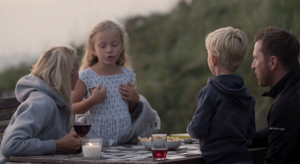
Hygge
Contribution submitted by Hyggerådet:
“Hygge is a concept that is deeply integrated and very much a part of the Danish language. It is something we like to share with each other. Hygge is for everybody, young and adult. “
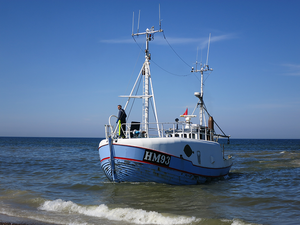
Nordic clinker boat traditions
The contribution is submitted by representives of the Danish Viking Ship Museum, Han Herred Sea Boat Association and the Wooden Ship Association:
"The clinker boat is a particular Nordic boat type, which during the last 2000 years has had great impact on shaping Denmark as a seafarers’ nation. The boat may vary in shape and size, depending on the purpose and use of the boat as well as for whom it was built and the materials available. Nordic clinker boat traditions also include the use and maintenance of the boats."
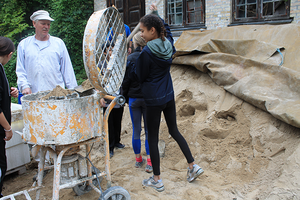
Transmission of traditional craftsmanship to schoolchildren
Contribution submitted by Old Denmark, Open air Museum – National Museum of Denmark:
“Craftsmanship to schoolchildren is a project that seeks to implement an educational model into Craft and Design which is part of schoolchildren’s curriculum. By working with different materials and trying out various types of craftsman techniques and skills, the project aims at giving children insights into an array of different forms of craftsmanship.”

The Danish Folk High School
Contribution submitted by Højskolehistorisk Forening:
“The values of the Folk High School are disseminated through the language and the stories, through talks and songs, and through the homely atmosphere of living in a boarding school. It is an intangible cultural heritage which impacts many people’s view on life and their everyday culture.”

Non-formal adult education
Contribution submitted by Søren Eigaard, Anders Hind, Ove Korsgaard og Agnethe Nordentoft on behalf of The Danish Adult Education Association:
“The tradition of managing and attending lifelong learning. The activities targets adults, who participate through choice and chose subject and activity. Non-formal adult education consists of non-profit training programs, debating events and other activities such as evening courses, amateur theatre, choir activities and local radio.“
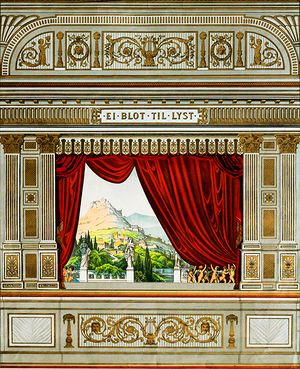
The marionette theatre in Denmark – art on small stages
Contribution submitted by Sven-Erik Olsen (European Paper Theatre):
“Around 1880 the marionette theatre emerged in Denmark; inspired by new printing techniques and an emerging popular interest in theatre. A that time, the marionette theatre was already widespread in most European countries, but thanks to the skilled lithographer Alfred Jakobsen, Denmark quickly asserted itself in Europe.”
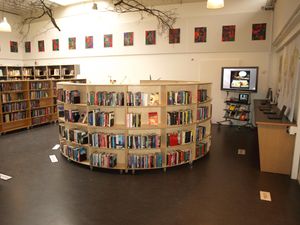
Danish School Libraries
The contribution is submitted by Kommunernes Forening for Pædagogiske Læringscentre:
“In an educational and in a world perspective, the Danish School Libraries are unique. Danish school libraries are rooted in a long cultural tradition of disseminating good children’s literature. The school library is a portal to the wonderful realm of fiction and to the unique knowledge of non-fiction. School libraries enable access to knowledge, experiences, education and access to the World.”
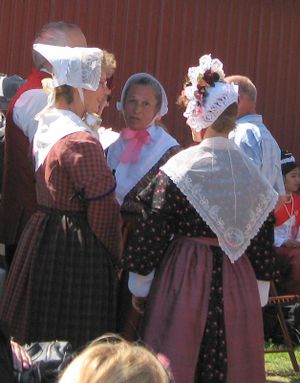
Making historical costumes on Bornholm
The contribution is submitted by Lene Steenbuch:
“At the Medieval Center on Bornholm and among groups of folk dancers, people create 19th Century costumes from Bornholm and costumes from medieval times.”
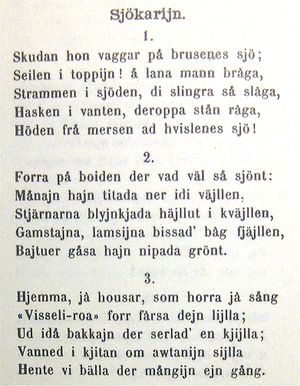
Bornholm language
Contribution submitted by Kim Tørnstrøm , Lillian Hjorth Westh and Ivar Lærkesen:
"After losing Scania in 1658, the Bornholm language is the only existing example of an Eastern Danish dialect in Denmark, except for a few trends in Dragør and Skovshoved. A fact that leaves people on Bornholm with a sense of linguistic isolation but also sets Bornholm language as a significant identity marker."
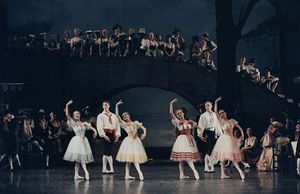
The Bournonville ballet tradition
Contribution submitted by representatives of Royal Danish Theatre:
"The ballet school of the ballet master August Bournonville has been passed on from generation to generation for almost two centuries. The steps and the repertoire represent a particular way of dancing, particular aesthetics and mimic gestures."

Cycling
The contribution is submitted by Danish Cyclists' Federation:
"Denmark is one of the countries in the world where most people bike around. Today most Danes learn to ride a bike before the age of 10 and about 50% of all Danes ride a bike several times a week. To many the bike is much more than just a means of transportation."
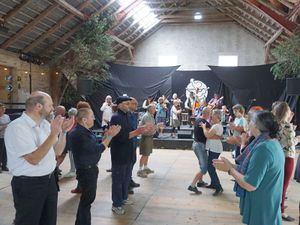
Danish Folk dance
Contribution submitted by Hanne Troen:
“Danish folk dance is rooted in the dance culture of Western Europe as it existed all over Europe from around 1750 to 1850. Through adaptions to locale conditions, a Danish folk dance culture exists today in its own manner with a particular sound and way of dancing.“
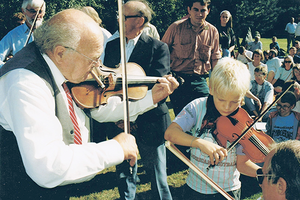
Danish folk music
Contribution submitted by president of The National Folk Musicians, Poul Bjerager and folk musicians Jesper Vinther and Henrik Jansberg:
"Danish folk music traditions are part of the intangible cultural heritage in Denmark. The traditions encompass a variety of music, dances and songs that encapsulate several hundred years of repertoires and expressions including those of today."
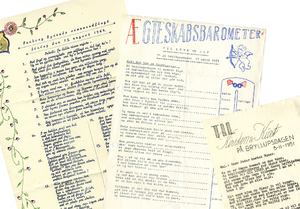
Occasional song
The contribution is submitted by film producer and author Ebbe Preisler:
"The typical occasional song is a sing-along written for a specific event and is based on a well-known tune. In Denmark, the phenomenon dates back to the 17th Century. The genre also contains examples of songs written for a specific event on a newly composed tune and sung by a choir or a single person."
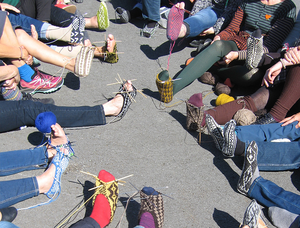
Knitting
The contribution is submitted by Agnete Rasmussen, a representative of the knitting association, Gavstrik:
"People have always knitted and will probably continue to do so. However, if the tradition is to maintain its popularity, the craft needs safeguarding through visibility and educational efforts."
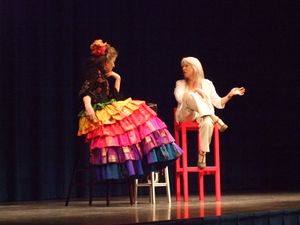
Story telling
The contribution is submitted by storytellers Vigga Bro and Lise Marie Nedergaard:
"The theatre, the novel and the folk song are rooted in the art of telling stories. From the outset of a basic storyline the storyteller creates the story through improvisation and engagement with the audience. Both professionals and amateurs tell stories."
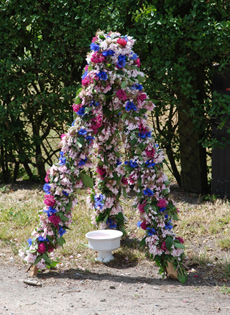
Kildefesten in Svaneke
Contribution submitted by Eigil Viggo Jensen, member of the Kildefest Committee: "The celebration stems from a heathen ritual of bringing the sick and the weak to the holy spring to let them drink of the health-giving spring during Midsummer. An event still celebrated in Svaneke on Bornholm."
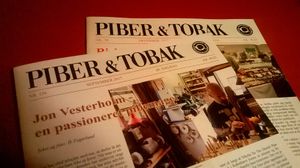
Pipe smoking
The contribution is submitted by Nordic Smoker's Guild:
"Pipe smoking has been a living tradition in Denmark since the 17th Century. Internationally, Danish pipe makers are recognized for their skills."
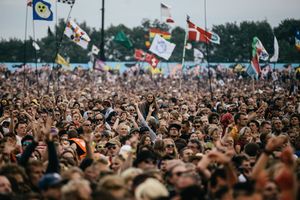
Roskilde Festival
The contribution is submitted by the Roskilde Festival Group:
"Roskilde Festival is the biggest music festival in Northern Europe and one of the oldest still existing festivals in the world."
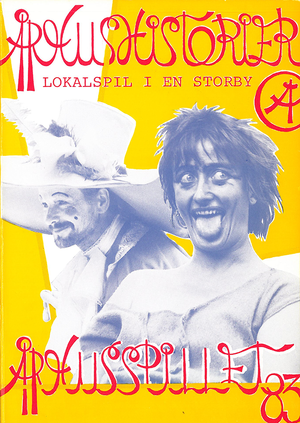
Community Plays
Contribution submitted by John Andreasen: "Between 1970 and 2017, about 700 community plays were put on production in Denmark. The number of participants – behind and on stage – can vary from 10 to over a 100 people. Most plays are based on historical events and are typically arranged by non-professional actors supported by friends, family and the local community.”
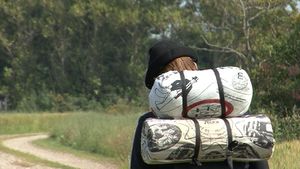
Contribution submitted by Suzi Apelgren: “At går på valsen” is to travel and develop as a craftsman through exchange of craft and culture. The tradition is most common in Central Europe. Right now, there are between 400 and 600 travelling craftsmen. Only one of whom is Danish. Within the last two years, two Danish travelling craftsmen have returned home. The returned craftsmen develop a lifelong brotherhood.”
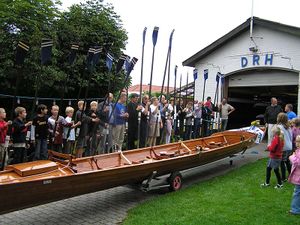
The coexistence of minority and majority by the Danish-German border
Contribution submitted by Bund Deutscher Nordschleswiger and Sydslesvigsk Forening:
“In the Danish-German border region minority and majority live in peaceful coexistence. Following decades of conflict, a fruitful coexistence and collaboration have developed during the past decades. Today, the presence and activities of the minorities are regarded as adding value to the region."
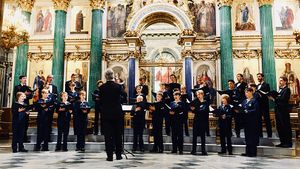
The classical European chapel choirs
Contribution submitted by The Copenhagen Royal Chapel Choir by Ebbe Munk:
“The classical European chapel choirs, the associated choir schools and their connection to their cities represent a unique cultural heritage and constitute the foundation of the European choir tradition and the development of classical music. For over 800 years, this world of sound and tradition has influenced the international music scene.”
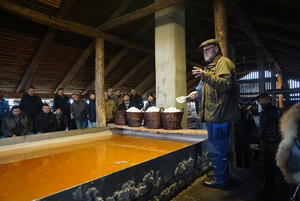
Salt seething on Læsø
Contribution submitted by Poul Christensen:
"Since 1991, Læsø Salt Seething has resumed the tradition of seething salt on the beach meadows facing south in a reconstructed medieval environment. Like in the Middle Ages, the salt production relies on a unique commodity: the highly salty groundwater. They use local wood in the process of heating and evaporation. They produce salt year round and accommodate between 70.00 and 75.000 visitor during the year. The visitors get to see the production and learn about the cultural history."
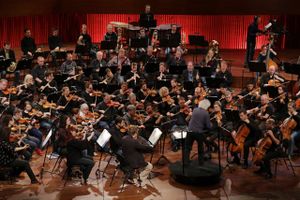
The musical theatre tradition represented by The Royal Danish Orchestra
Contribution submitted by representatives of the Royal Danish Theatre:
“The Royal Danish Orchestra dating back to 1448, served King Christian I as the Royal Court Trumpet Corps. The first 401 years the Orchestra was the King’s property and a prestigious cultural project. After the Constitution of 1849, the Orchestra was handed over to the State. All orchestra members have a unique number.”

Tilting
Contribution submitted by Sønderjyllands Ringriderprogram:
"The National sport of Southern Jutland. A sport for all ages, professions and gender. The sport takes place across the region in different towns."
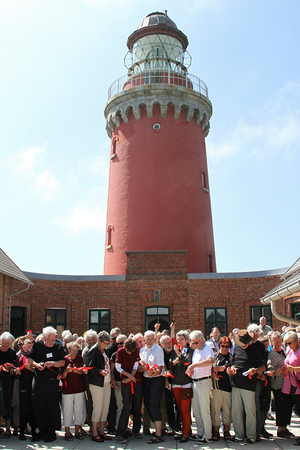
Life by Bovbjerg Lighthouse
Contribution submitted by Hans Kolind-Andersen:
"The Bovbjerg Lighthouse is cultural center for people who are interested in culture, nature, art, theatre, music, science, history and literature. A committed group of volunteers runs many of the activities and takes part in the everyday management of the lighthouse. The lighthouse is a popular recreational area for tourists and the local population."

The traditional costume of Læsø
Contribution submitted by Kirsten Larsen and Preben Mikkelsen:
“As seafarers, the men at Læsø brought home silk, damask and other exotic textiles from countries far away. Silver was imported from the Netherlands. The costume was designed to imitate the clothing of the bourgeoisie in the larger cities. The design of the costume has not changed since 1850.”
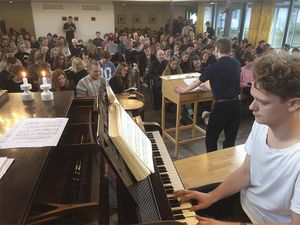
Community singing
Contribution submitted by Claus Skjold Larsen:
”In Denmark, community singing is a living tradition. The lyrics and melodies of the songs are of high artistic quality and are performed in many contexts where people come together: at schools, workplaces, associations, sport clubs, city councils, political gatherings, family gatherings and so forth.”

School concerts
Contribution submitted by Levende Musik i Skolen:
“Concert where authentic, professional music is made available to schoolchildren. Every year, concerts are arranged in schools allowing pupils to gain access to music and professional musicians.”
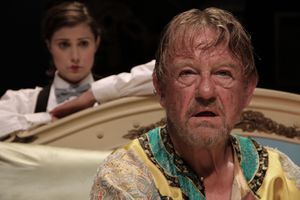
The Holberg Tradition
Contribution submitted by Holbergsamfundet:
“Ludvig Holberg (1684-1754) is the biggest name in Danish theatre. He introduced an array of different genres to the cultural landscape of Denmark. The Holberg tradition encompasses the comprehensive work of Holberg. His work has had a massive impact on who we are as a people and has contributed to our openness to European culture. Similar effects occur in Norway where Holberg was born.”
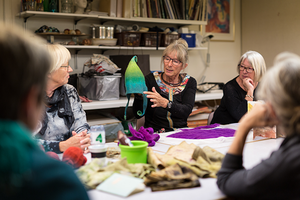
Danish domestic crafts and artisan traditions
Contribution submitted by FORA:
“Danish domestic crafts and artisan tradition is rooted in traditional ways of producing and thinking of craftsmanship and artisanship. Opposed to the professional artisan, these practitioners often come together in associations to design and create without commercial aim. The tradition represents the non-professional citizen’s skills and ability to produce things for everyday use and art by hand.”
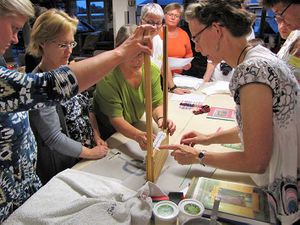
Making Danish national costumes
Contribution submitted by Folkedans Danmark:
“Training program in producing traditional costumes of the peasant population in Denmark (1750 – 1870). Traditional costumes have always been an integrated part of the folk dance community. In the articles of the association Folkedans Danmark, it states that the association must work to preserve, use and develop folk dance, traditional costumes, and associated traditions.”
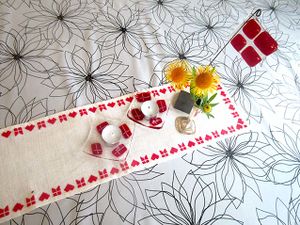
Tradition from the Southern part of Jutland
Contribution submitted by Asta Flyvholm Kjær:
”I have grown up speaking and reading with a regional accent since I was a child. Today is speak and use the dialect of Southern Jutland through talks and storytelling events. I tell fairytales of Hans Christian Andersen and because the audience already knows the stories they understands despite the dialect.”
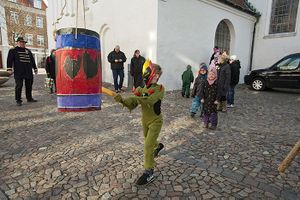
Fastelavn
Contribution submitted by Camilla Agnethe Jensen:
”Nowadays Fastelavn is a festivity celebrated mainly for and by children. Children “beat the cat out of the barrel” and elect a King and a Queen of Cats. The festivities involves lots of candy and children wear beautiful and imaginative costumes. Fastelavn is celebrated across the nation.”
Revy
Contribution submitted by Leif Maibom:
“Originating from Denmark, the revy dates back to 1849, when author Erik Bøgh wrote a singspiel containing lyrics on contemporary news matters.”
Excursions on Læsø
Contribution submitted by Poul Christensen:
“Nowadays when people on Læsø go for a walk in nature, they never return empty handed. It is an old tradition, that you bring back home what nature so kindly gives. Back in the old days, the custom stemmed from necessity; today mainly exercised as it brings joy.”
Medical gardens
Contribution submitted by The Medical Gardens in Tranekær:
“Centre for the collecting of knowledge on medical plants and their use in traditional medicine and in modern medicine. The gardens contain 600 different sorts of medical plants including trees. The centre preserves living cultural heritage of Langeland i.e. sorts of apple trees, roses and poppies from Langeland."
The Easter eggs from the Easter Bunny
Contribution submitted by Helle Lund Ravn:
"Easter morning the Easter Bunny leaves eggs for the children to find."
May Tree celebration
Contribution submitted by Strynø Majtræsforening:
"Every year on Strynø, an island in the archipelago of Funen, people come together for the May Tree celebration. Men hoist the May Tree, women decorate the garlands for the tree and children bring forth the flag to celebrate the coming of summer."
The Danish treasuries of children’s songs
Contribution submitted by Aarhus Music School:
“The tradition of singing to and with children exists in most cultures. People pass on traditional songs and singing games and make up their own songs to comfort the child and to help it fall asleep.”